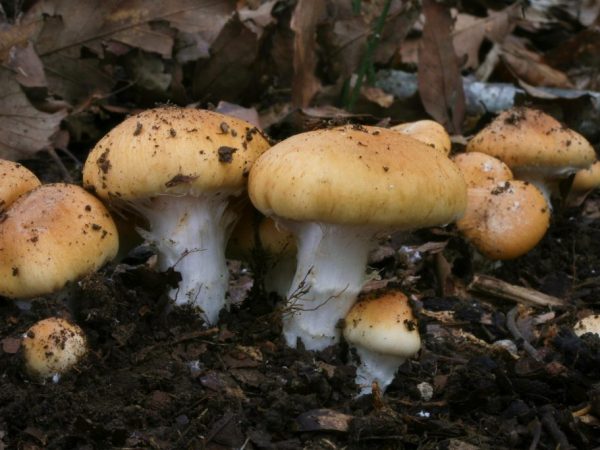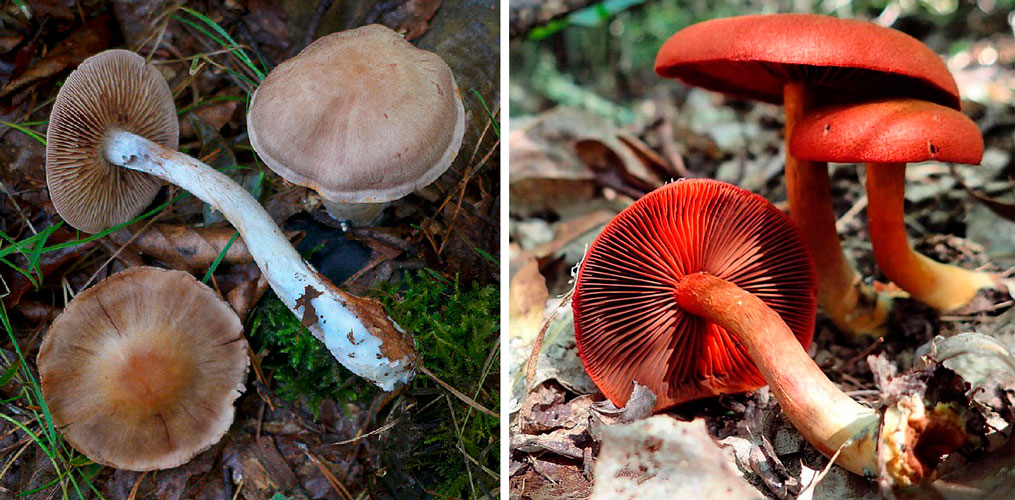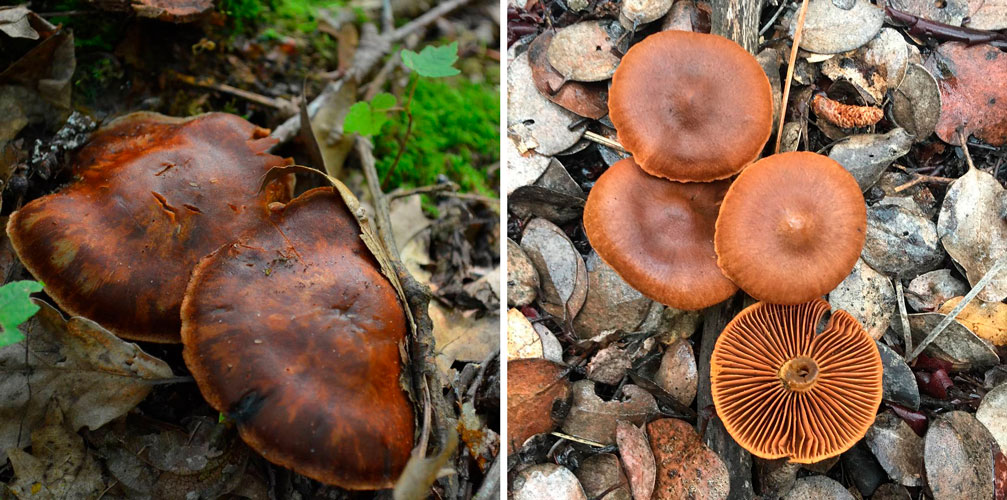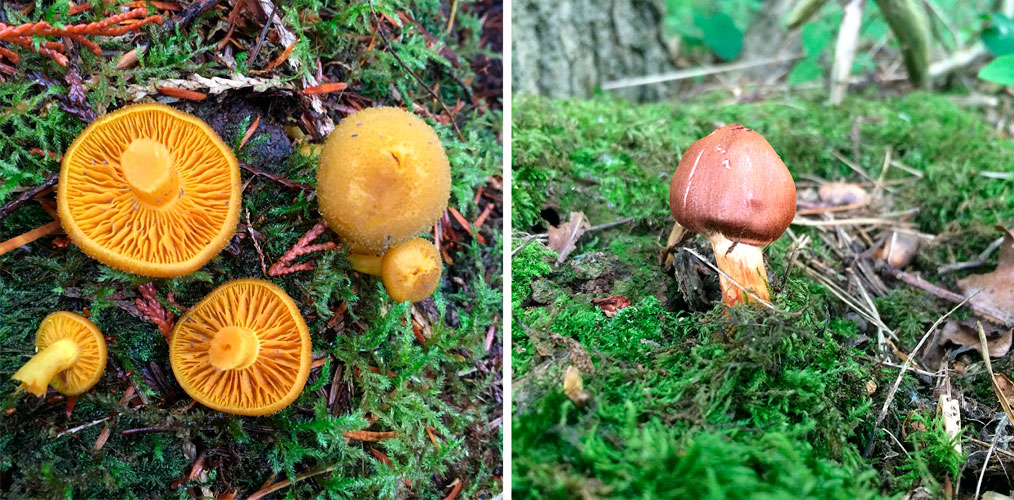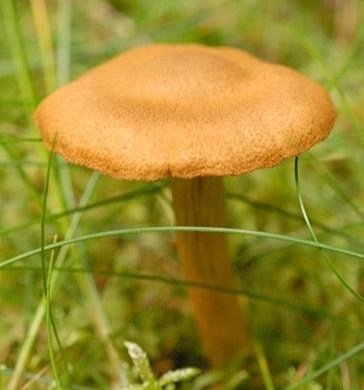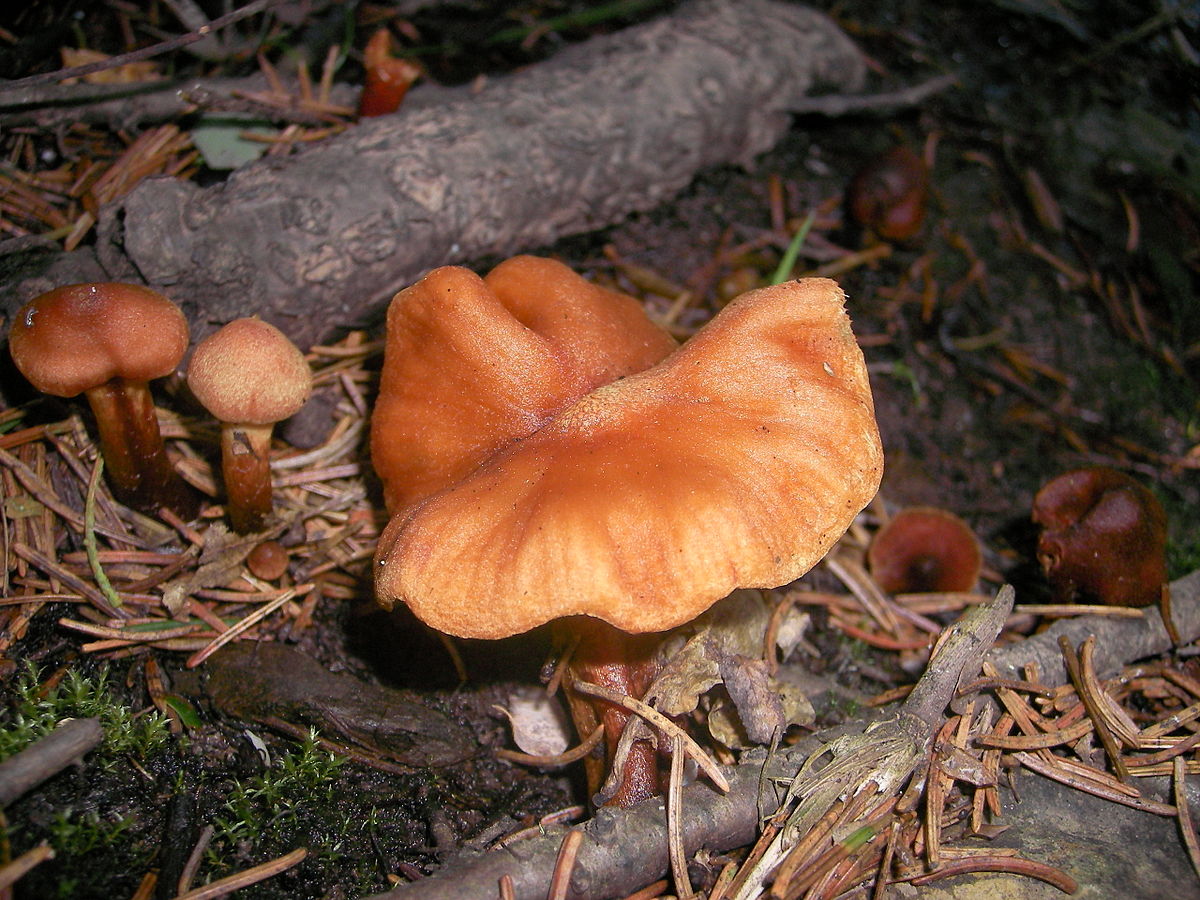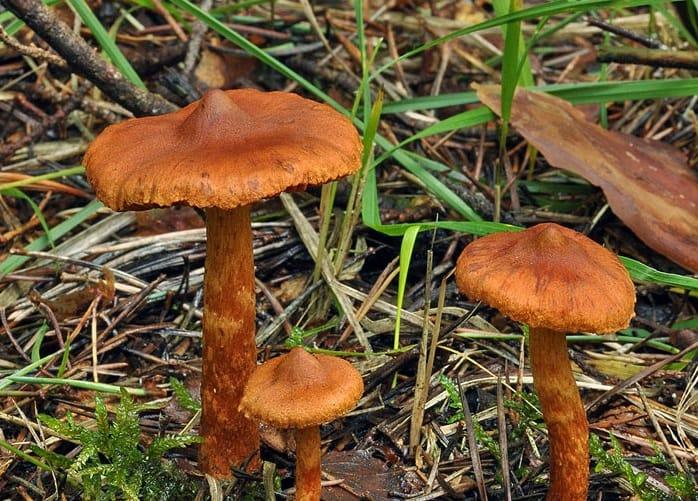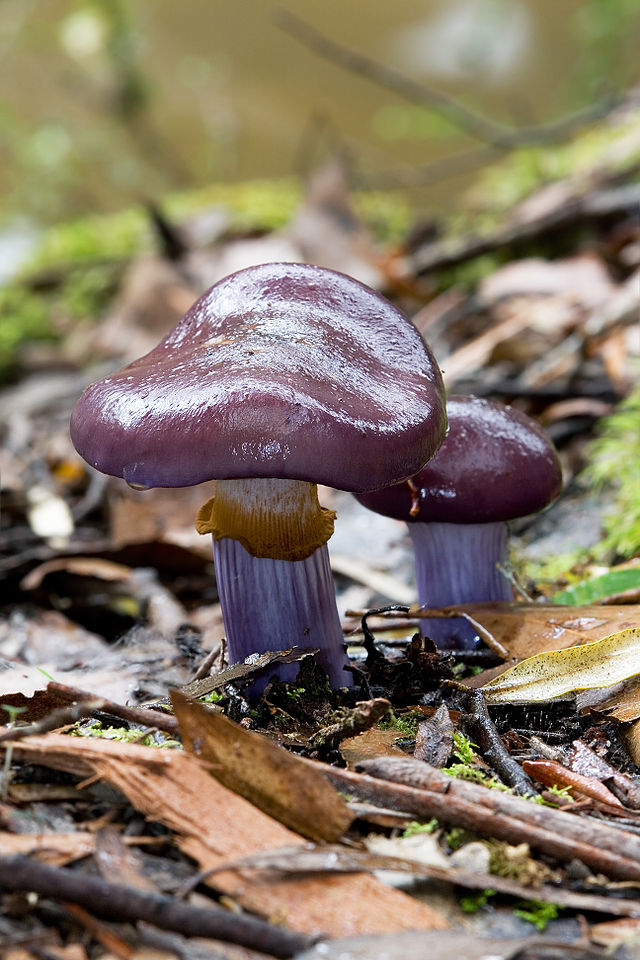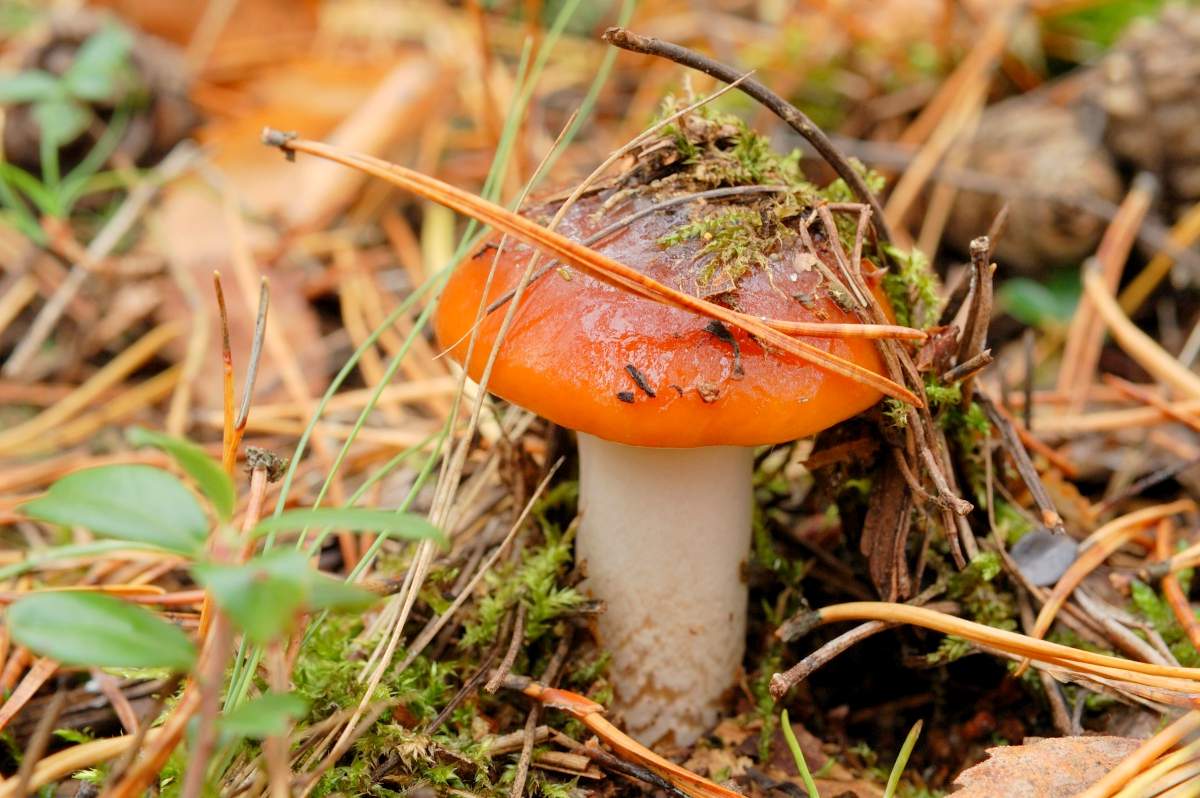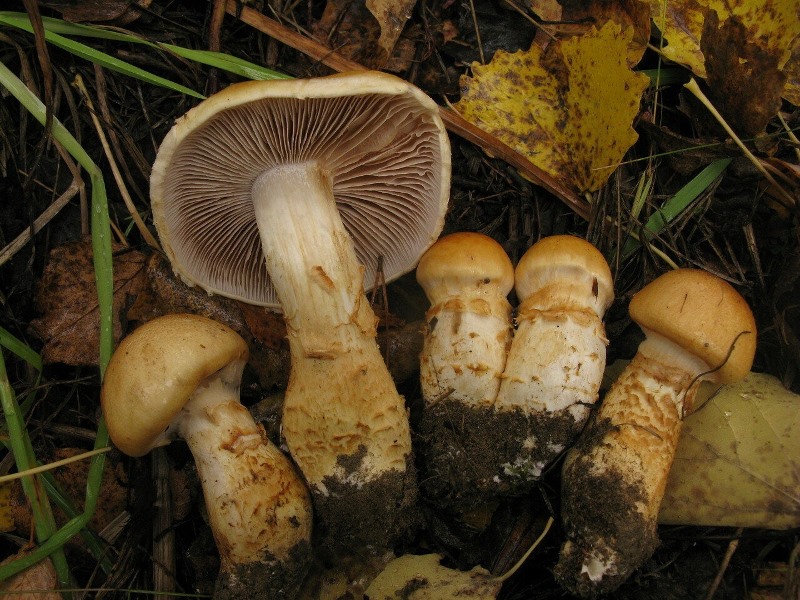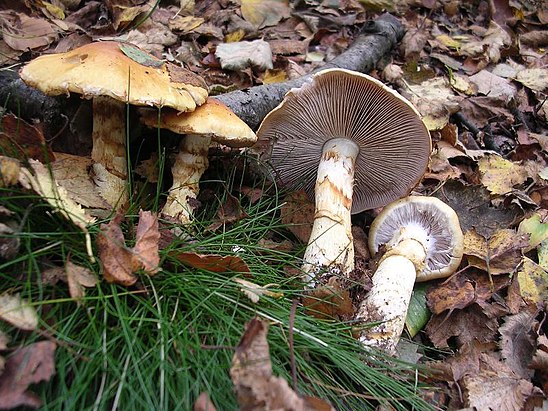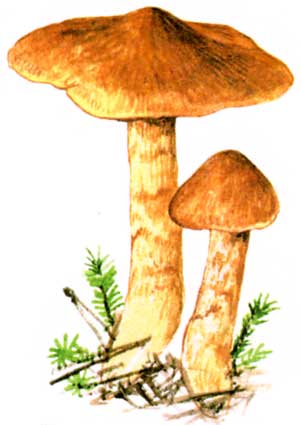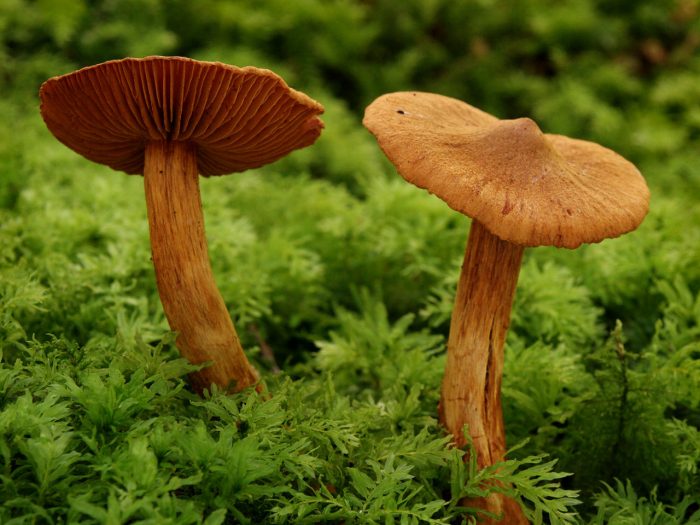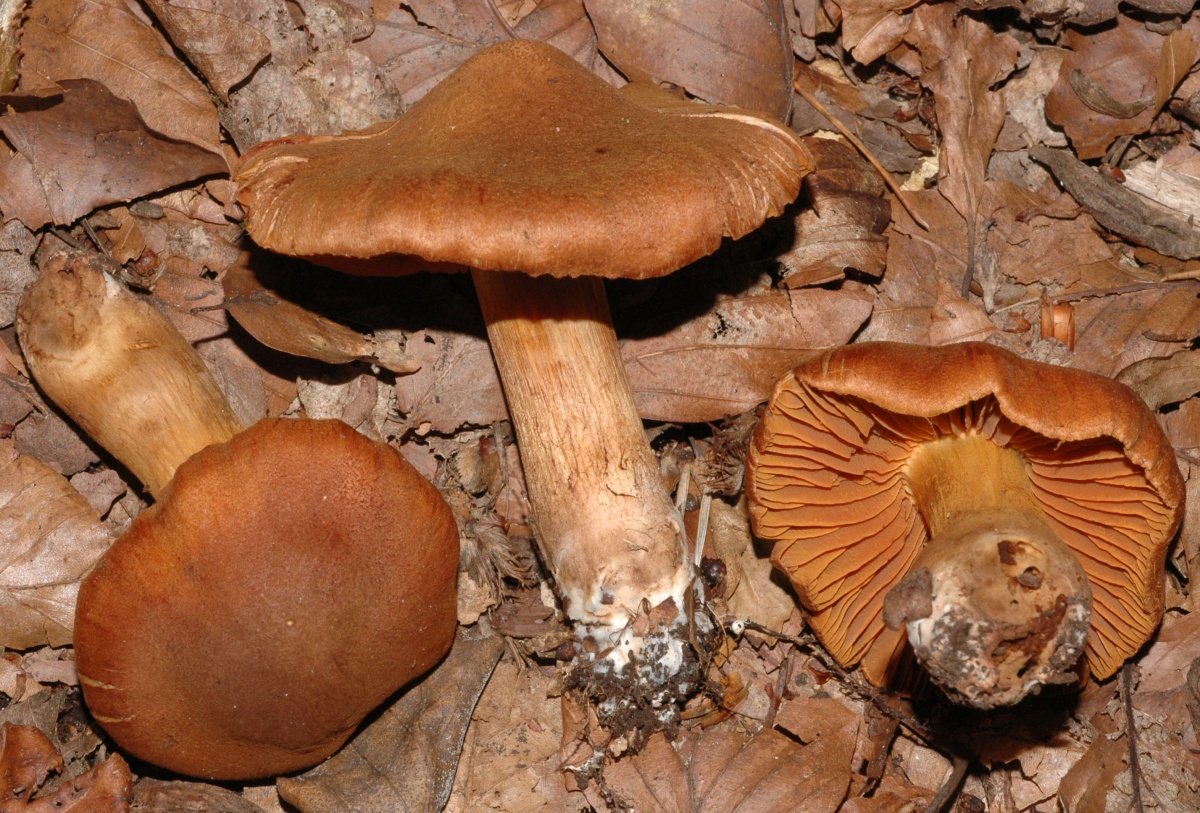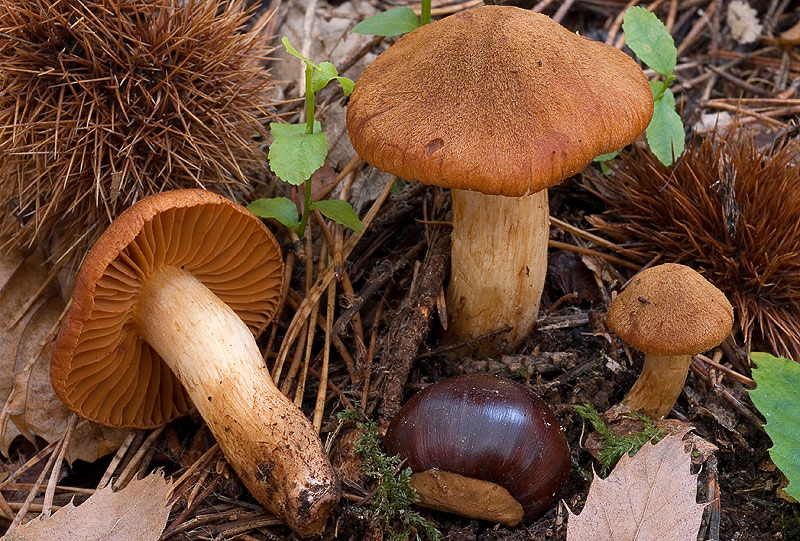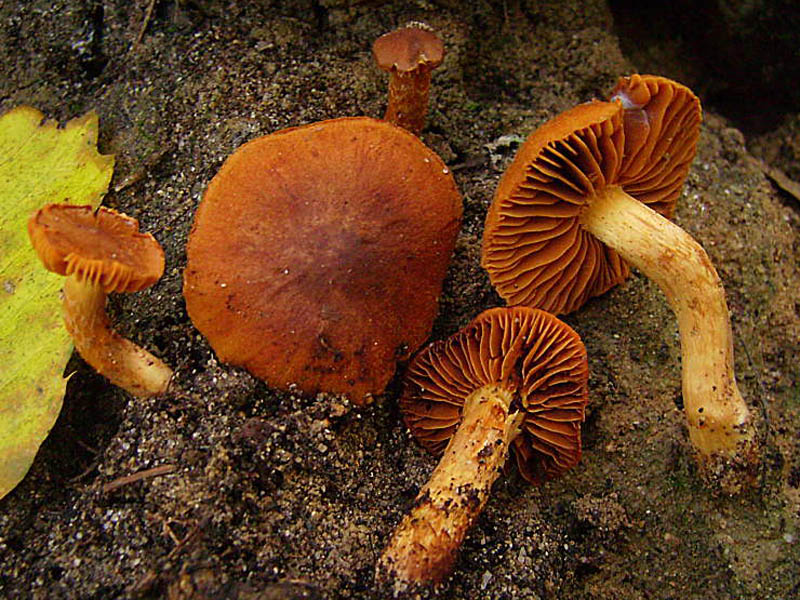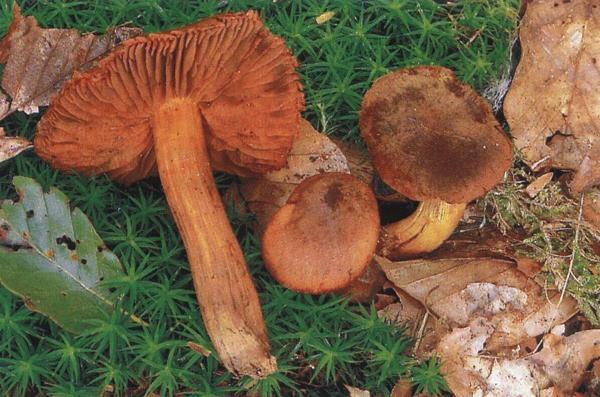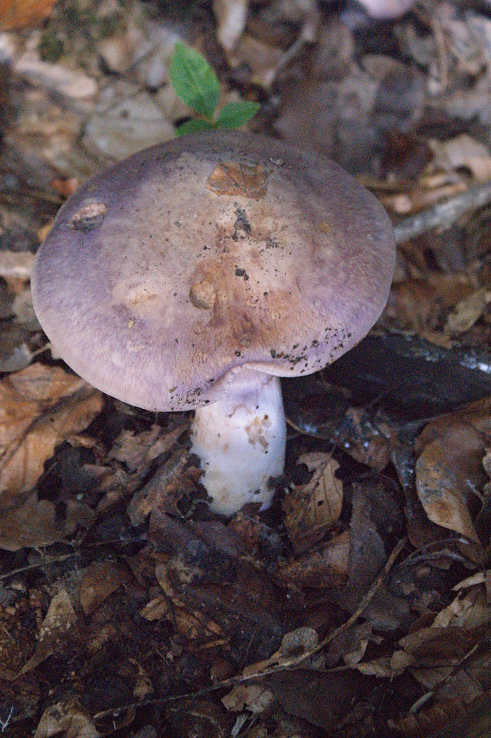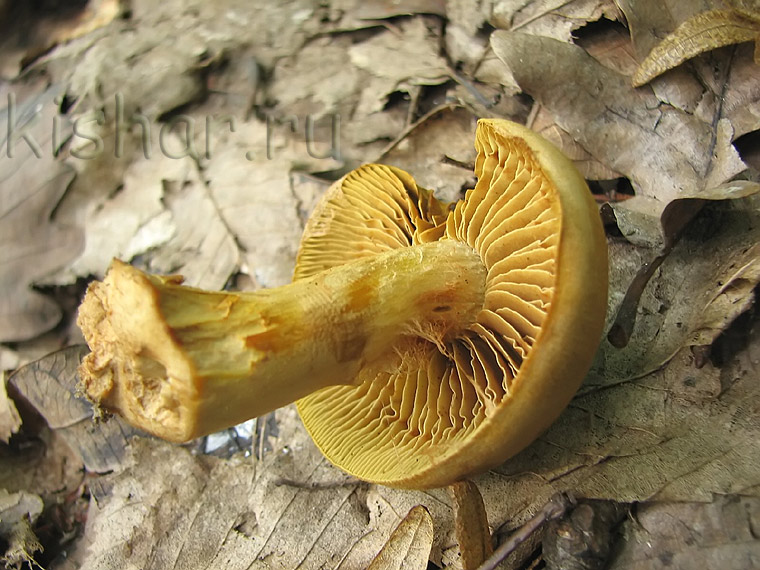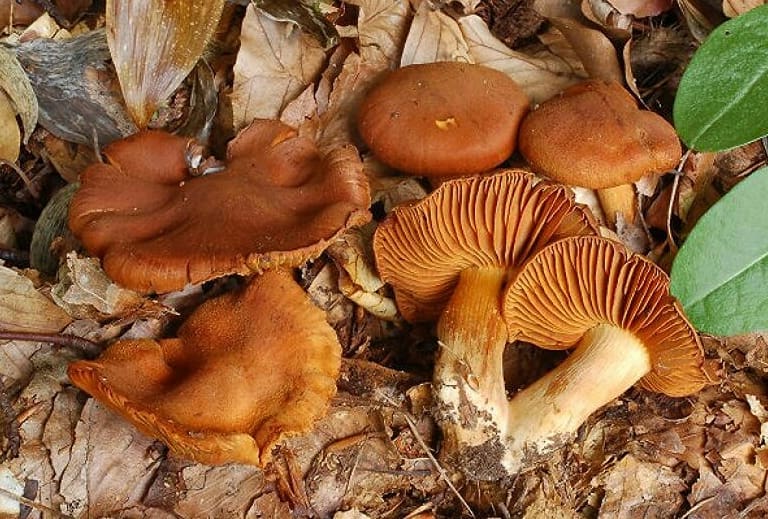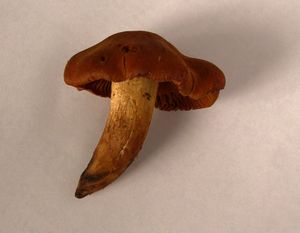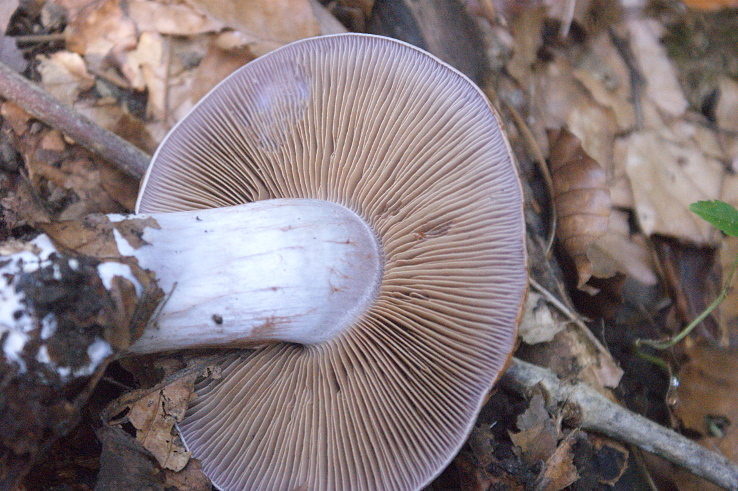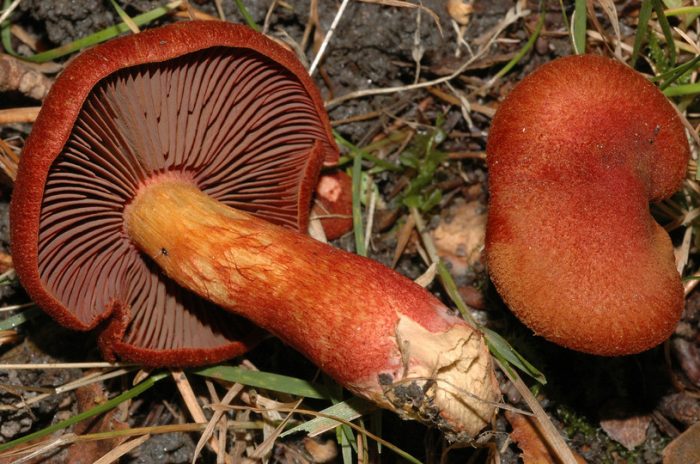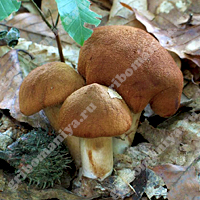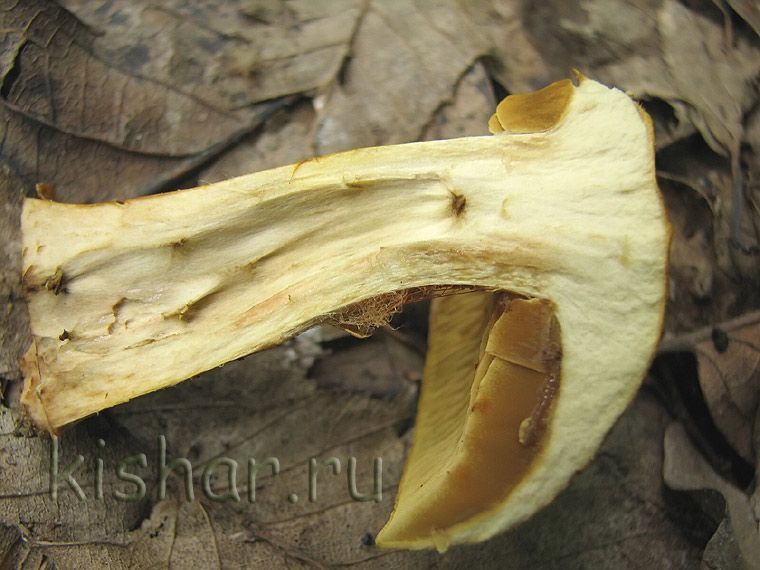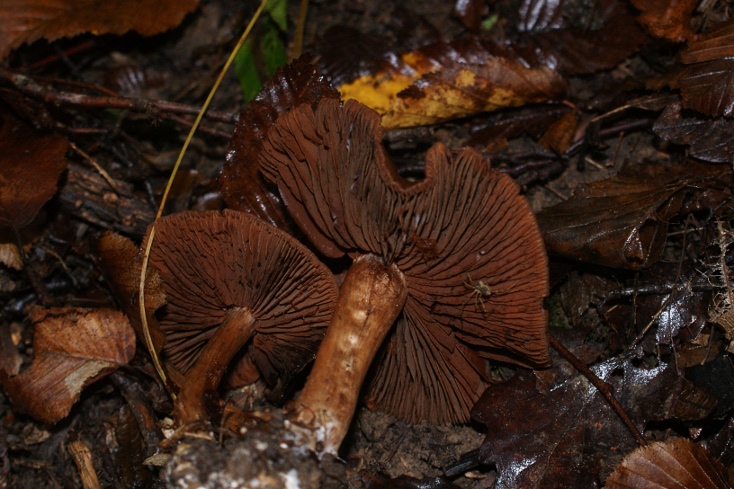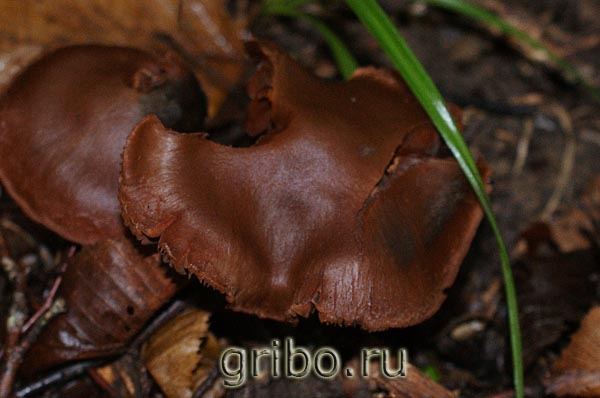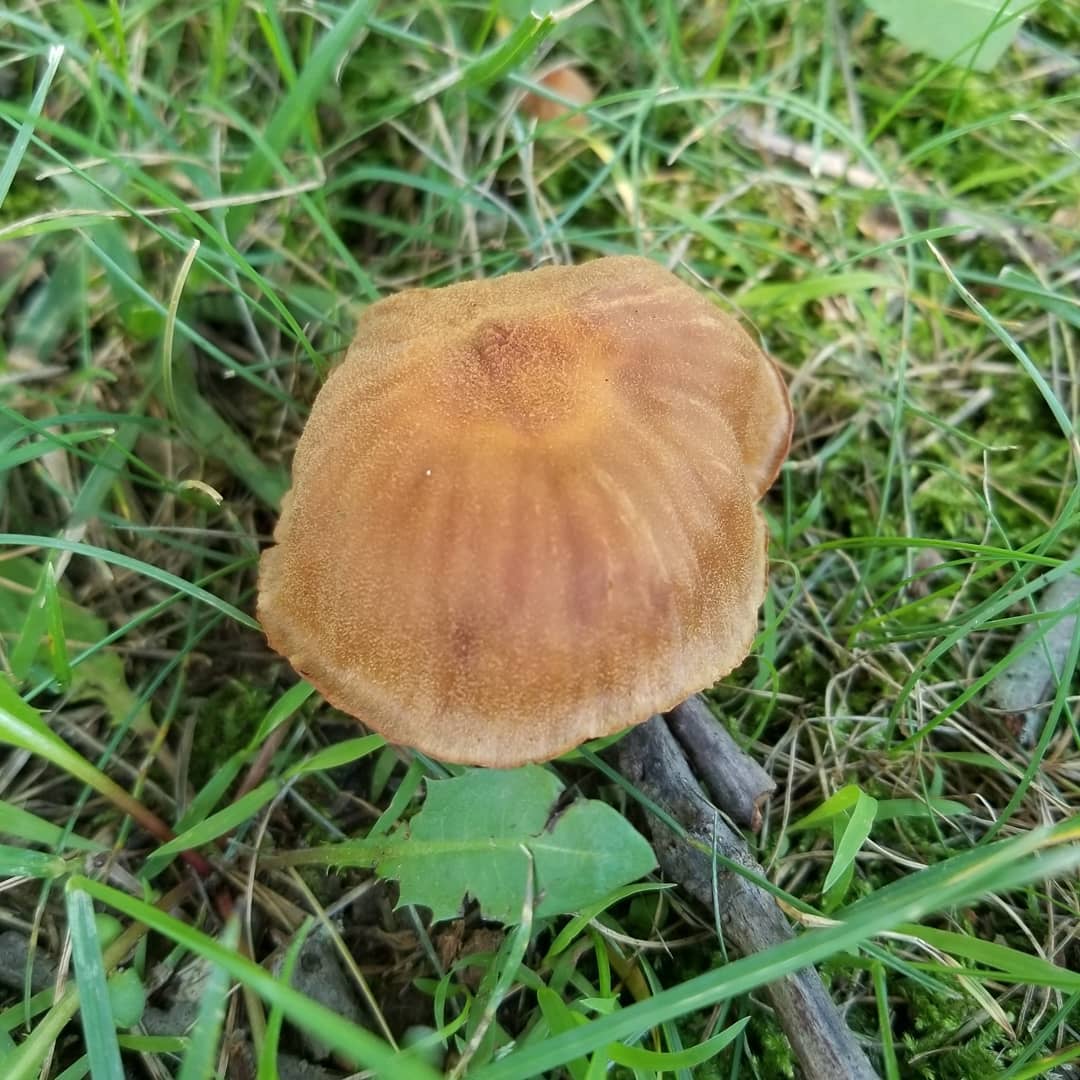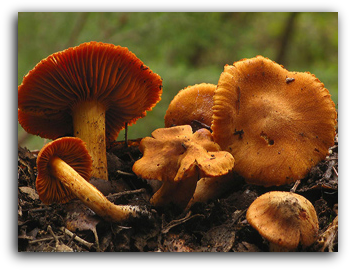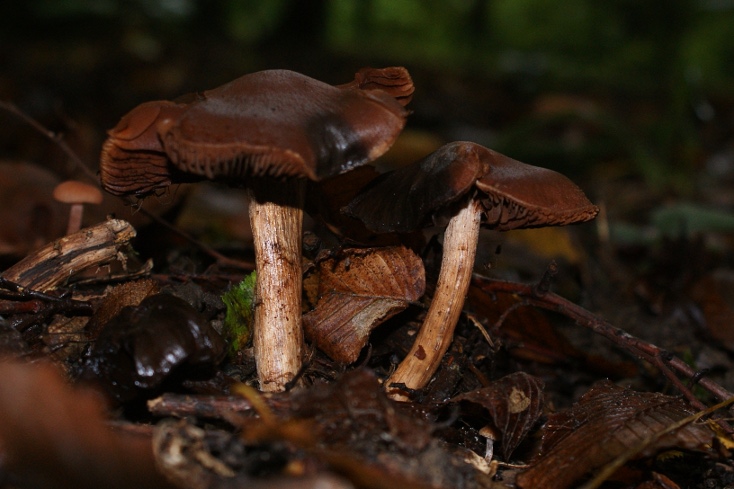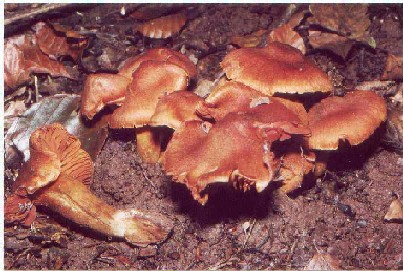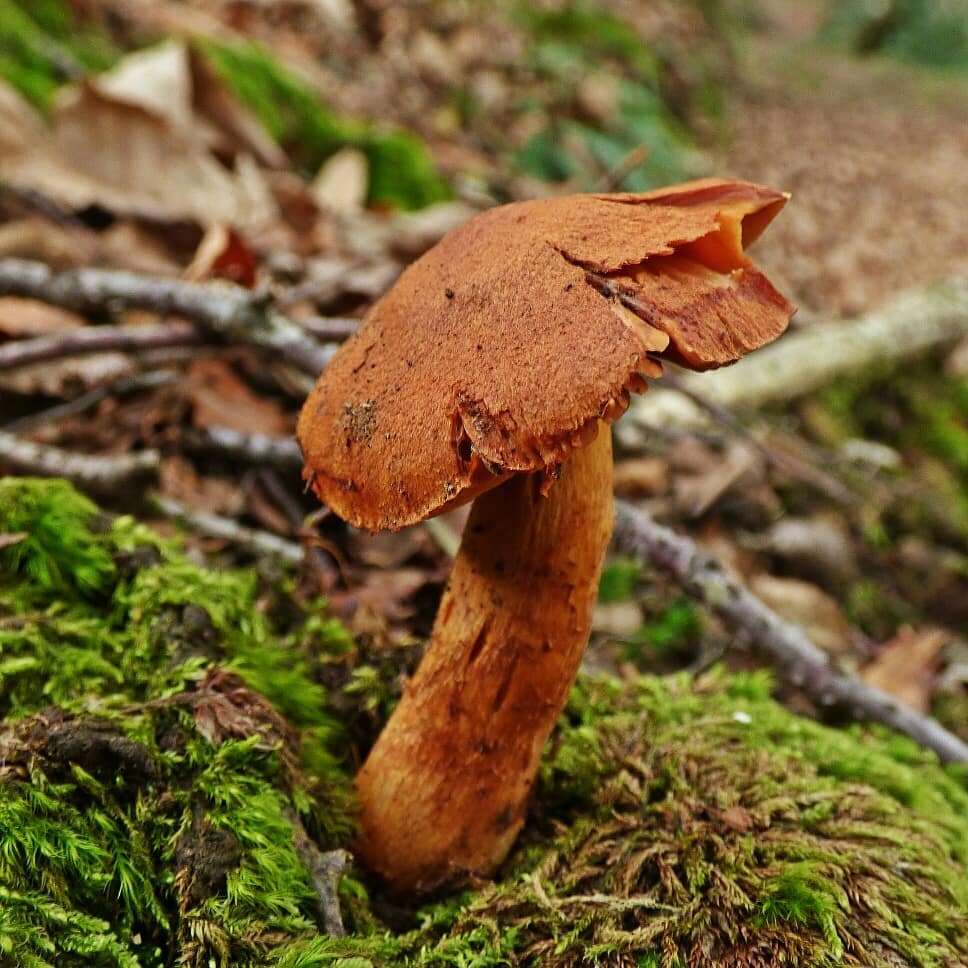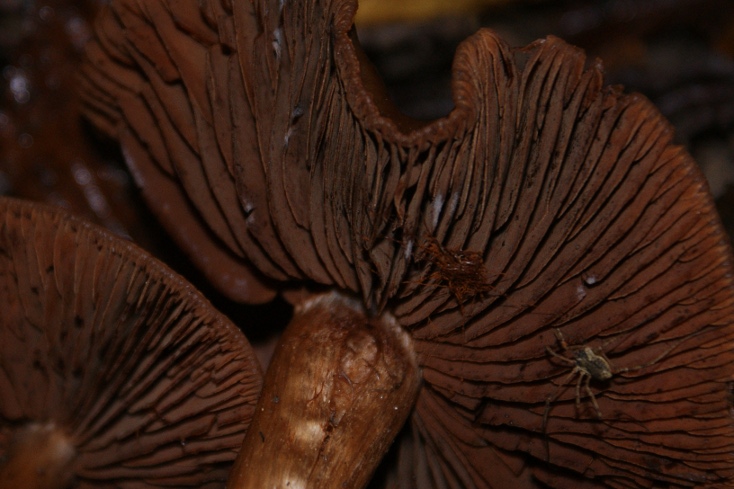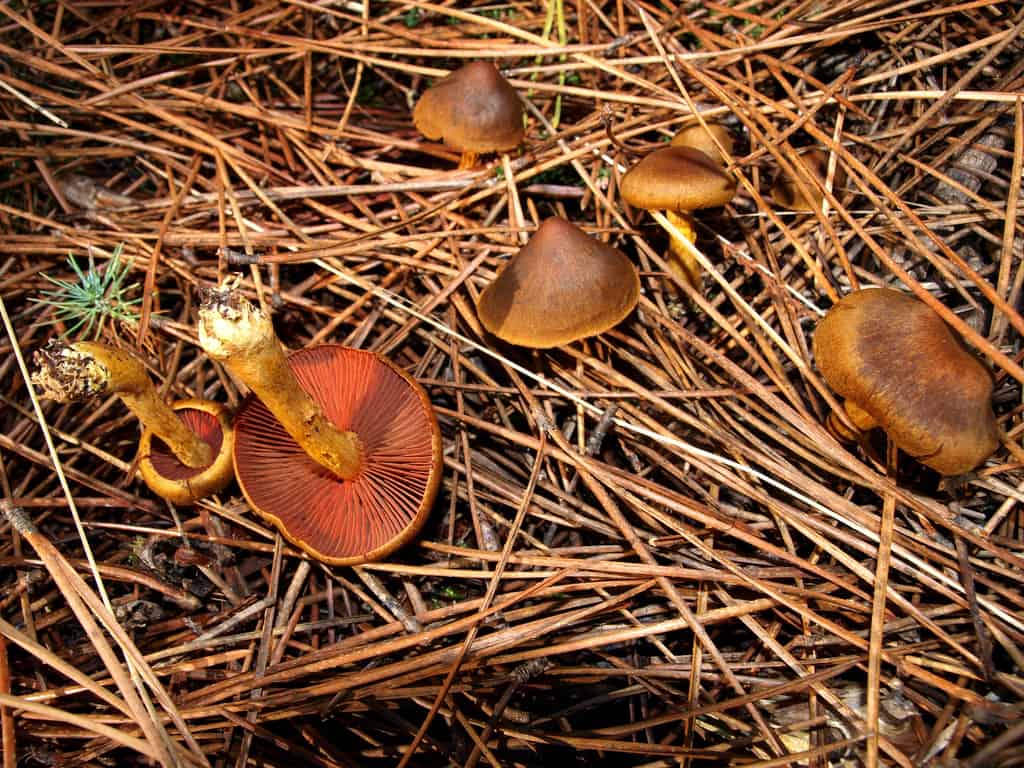Virulence
Orellanins act very slowly and gradually become the cause of the development of kidney failure. Other toxic compounds are also present in mushrooms - these are benzonine, cortinarin and others. Signs of spiderweb poisoning appear only 3-14 days after eating mushrooms - this is thirst, burning sensation and dry mouth. The human condition is deteriorating very quickly. Doctors need to be called immediately.
Moreover, it is important to know that representatives of this species, even after thorough cooking or drying, still remain poisonous. And treatment after poisoning with a spider web sometimes lasts more than one month.
Interestingly, until the 60s of the twentieth century, the most beautiful spider web was considered a completely harmless mushroom - it was eaten. But when a number of poisonings were recorded in Poland (and some of them were fatal), then scientists established that this particular species caused them. Therefore, having met him, just leave the "handsome" in place.
Description of the mountain webcap
The hat of the plush spider web is dry, matte, with small scales. The diameter of the cap is 3-8.5 centimeters. At first, the shape of the cap of the mountain spider web is hemispherical, and then it becomes flat with an unexpressed tubercle. The color of the cap is brown-red or orange with a golden tint.

This is a lamellar mushroom, the plates are adherent to the stem, they are located relatively rarely. In young mushrooms, the plates are orange-brown in color, and with age they become slightly darker. The pulp is yellowish in color, has a slight radish smell. Spores are elliptical in shape, with a warty surface. Rusty brown spore powder.
The leg length is 4-9 centimeters, and the diameter is 1-2 centimeters. Its shape is cylindrical, narrowing is noticeable downward. The surface of the stem is fibrous, light yellow in color. There are no belts on the leg.
Distribution of mountain spider webs
The mountain cobweb is a relatively rare species. In some countries, these mushrooms are not found at all. In Europe, they grow mainly in the fall, sometimes they can come across at the end of summer. They are common in deciduous forests, and rarely grow in coniferous forests. Plush webcaps mainly form mycorrhiza with oaks and birches. Most often they settle on acidic soils.

Similar species
It is very difficult to recognize this deadly mushroom as there are many similar species. All poisonous spider webs are of the subgenus Dermocybe. They are characterized by dry fruiting bodies, slender legs, silky tomentose caps and orange or rusty orange plates. It is not easy even for a specialist to distinguish a plush cobweb.
The poisonousness of the ivy webcap
Even before the 1960s, mountain spider webs were considered harmless mushrooms. It was assumed that all cobwebs are edible, among them there are only tasteless and bitter representatives, in total there are about 400 species of cobwebs, and not all of them can be cooked.
Frequent poisoning has been reported in Poland, with many fatal cases. Experts have found that the plush webcap was the cause of the poisoning. This mushroom is not alarming as it smells like radish and tastes good.

Chemical analysis of the fruit bodies of a plush spider web showed the presence of poisonous substances in it - orellanin, benzoinin, cortinarin and others. The poisonous substance orellanin causes pathological changes in the kidneys, which are often fatal.
The danger of mountain cobwebs is that signs of a negative effect on the body do not appear immediately, but only after 3-24 days. After this, the victim's condition quickly deteriorates, the kidneys stop working, and death occurs.

Other mushrooms of this genus
Cinnamon webcap is an inedible mushroom.The diameter of its cap is 2-4 centimeters, its shape is hemispherical at a young age, and over time it becomes prostrate. The hat is dry, fibrous, brown-brown or olive-brown. The leg is cylindrical, its length is 2-8 centimeters, and its thickness is 0.3-0.6 centimeters, its color is yellow-brown.
Brown cobwebs bear fruit from October to September. They grow in Eurasia and North America, in coniferous and deciduous forests. They live singly or in groups.
Diverse webcap - conditionally edible mushroom. The hat is hemispherical in shape, with a diameter of about 8 centimeters, as it grows, the shape of the hat straightens and thin wavy edges are formed. The surface of the cap is smooth and damp. The leg is rounded, at the base it turns into a tuber. Its height reaches 8 centimeters.
This is a rare mushroom, but it is quite common in Russian forests. Favorite growing places are coniferous forests, but sometimes various cobwebs are found in dense deciduous forests. In food, these mushrooms can be used in the field of boiling for 30 minutes.
Common webcap (Cortinarius trivialis) what it looks like, where and how it grows, edible or not
Common webcap: photo and description
| Name: | Common webcap |
| Latin name: | Cortinarius trivialis |
| Type of: | Inedible |
| Specifications: |
|
| Systematics: |
|
The common webcap (lat.Cortinarius trivialis) is a small mushroom of the Cobweb family. The second name - Pribolotnik - he received for preference to growing conditions. It is found in wet, swampy areas.
A detailed description of the Common Webcap with photos and videos is presented below.
Description of the common webcap
The mushroom was called a cobweb for a kind of "veil" of a cobweb film that is present in young specimens. The rest of the appearance is unremarkable.
Description of the hat
Pribolotnik's cap is small: 3-8 cm in diameter. At the initial stage of development, it has the shape of a hemisphere, which is later revealed. The color of the cap ranges from pale yellow tones to ocher and light brown shades. The core is darker than the edges.
The cap is sticky to the touch, there is a small amount of mucus on it. The surface of the hymenophore is lamellar. In young fruit bodies, it is white, and in mature specimens it darkens to yellowish and brown tones.
The pulp is dense and fleshy, white, with a harsh odor.
Leg description
The leg is 6-10 cm in height, the diameter is 1.5-2 cm. Slightly narrowed towards the base. There are specimens with a reverse structure - there is a small expansion at the bottom. The color of the leg is white, closer to the ground it darkens to a brown tint. Above from the cobweb blanket are brown concentric fibrous bands. From the middle of the leg to the base - weakly expressed.
Where and how it grows
Podbolnik can be found under birches and aspens, rarely under alder. It rarely lives in coniferous forests. Grows singly or in small groups in damp places.
In Russia, the distribution area of the species falls on the middle climatic zone.
Fruiting from July to September.
Edible webcap common or not
The nutritional properties of the Common Webcap have not been studied, but it does not apply to edible mushrooms. This species cannot be eaten.
Related specimens contain dangerous toxins in the pulp.
Poisoning symptoms, first aid
The danger of toxic species of this family is that the first signs of poisoning appear gradually: up to 1-2 weeks after eating mushrooms. Symptoms look like this:
- intense thirst;
- nausea, vomiting;
- stomach ache;
- spasms in the lumbar region.
If you find the first signs of poisoning, you must urgently consult a doctor or call an ambulance. Before receiving qualified treatment, you need to:
- flush the stomach using activated charcoal;
- plentiful drink (3-5 tbsp. boiled water in small sips);
- take a laxative to cleanse the intestines.
Doubles and their differences
The podbolnik is confused with other members of the family, as they are quite similar. The greatest similarity is noted with the mucous webcap (lat.Cortinarius mucosus).
The hat is 5-10 cm in diameter. It has a thin edge and a thick center, abundantly covered with transparent mucus. The leg is slender, cylindrical, 6-12 cm long, 1-2 cm thick.
It differs from Pribolotnik in abundant mucus and the shape of a cap.
Grows in coniferous and mixed forests under pine trees. Bears fruit singly.
The slime webcap (lat.Cortinarius mucifluus) is another twin of the Pribolotnik, which is confused with the mucous webcap because of a similar name. The hat with a diameter of 10-12 cm is abundantly covered with mucus. The stem is 20 cm long in the form of a spindle, also covered with mucus. Prefers coniferous forests.
It differs from Pribolotnik in abundant mucus and a longer leg.
Conclusion
The common webcap is an inedible mushroom, its properties have not been fully studied. Can be confused with other members of the family, the use of which is not recommended. The greatest similarity is noted with the Slime Webcap and the Slime Webcap, but they can be distinguished by their cap. In the latter, it is abundantly covered with mucus.
Additional information about the common webcap:
Lazy webcap (Cortinarius bolaris)
Lazy webcap (lat.Cortinarius bolaris) is a poisonous mushroom of the Spiderweb family (Cortinariaceae).
Hat:
Relatively small (3-7 cm in diameter), pokular-like in youth, gradually opens to slightly convex, cushion-shaped; in older mushrooms, it can be completely spread, especially in dry times. The surface of the cap is densely covered with characteristic red, orange or rusty-brown scales, which makes the mushroom easily recognizable and visible from a distance. The flesh of the cap is white-yellowish, dense, with a faint musty odor.
Plates:
Wide, adherent, medium frequency; in youth, gray, with age, like most cobwebs, become rusty brown from maturing spores.
Spore powder:
Rusty brown.
Leg:
Usually short and thick (3-6 cm in height, 1-1.5 cm in thickness), often twisted and twisted, dense, strong; the surface, like that of the cap, is covered with scales of the corresponding color, albeit not so evenly. The pulp in the leg is fibrous, dark at the base.
Spreading:
Lazy webcap meets in September-October in forests of various types, forming mycorrhiza, apparently, with trees of different species, from birch to pine. Prefers acidic soils, bears fruit in damp places, in mosses, often in groups of fungi of different ages.
Similar species:
Cortinarius bolaris in its typical form is difficult to confuse with any other cobweb - the variegated color of the cap practically eliminates error. Literature, however, points to a certain cobweb of peacocks (Cortinarius pavonius), a mushroom with purple plates in youth, but whether it grows with us is still a big question.
Edible: The mushroom is inedible or weakly (if not weakly) poisonous.
Remarks The fact that Cortinarius bolaris is classified as a "small webcap" is a big deception! Knowing about the colorful "bumpkin", I searched for it for a long time among small variegated mushrooms, I searched and did not find it; he, however, was not there, for when this mushroom is, doubts disappear by themselves. Beautiful crimson-and-motley hats in green moss, like the eggs of an alien invader - what a find could be more beautiful! And I would sharply criticize people who pluck and scatter lazy cobwebs around the neighborhood. Cortinarius bolaris bears no resemblance to any fungus that may be of interest to the purveyor. With none.So why should he tolerate from people what he would not tolerate? I do not understand this and do not want to understand.
Edible mushrooms, berries, herbs
Orange-red webcap (Cortinarius orellanus)
The orange-red webcap is also called a plush webcap or a mountain webcap. You can meet him from the last decade of August to the last decade of October in broad-leaved (where there is a birch oak) and coniferous forests. It prefers to grow singly and in groups on sandy soil. More common in the southern regions of Russia.
The hat is from 4 to 8 cm in diameter, at first it has a hemispherical shape, then it is convex-outstretched or flat with a lowered edge. The surface is dry, matte, felt, fine-flaked, orange-red-brown in color with a darker center. There is a small tubercle in the central part of the cap.
The plates are sparsely located, wide, thick, adherent have a color similar to the color of the cap. On very young specimens, there is a cobweb cover of a yellowish-ocher color, which disappears very early.
The leg is cylindrical, sometimes slightly narrowed towards the base, 5-10 cm long and up to 2 cm in diameter. The structure is longitudinally fibrous (covered with dark fibers inherited from a torn bedspread), without belts, has a light yellow color on the main part. Above, the leg is lemon-yellow, at the base it is rusty-brown.
The pulp is yellowish-brown, tasteless, with a faint unpleasant odor, vaguely resembling a radish.
The orange-red webcap is recognized as a deadly poisonous mushroom. Its main insidiousness lies in the fact that the main symptoms of poisoning appear 5-14 days after consumption. Poisonous toxins (orellanins) are completely retained during cooking, frying or drying. The first symptoms of poisoning are unbearable thirst, then sharp pains in the abdomen appear, later pathological changes in the work of the kidneys occur. If the poisoned person is lucky and survived, then further treatment can last up to a year or more.
The mountain webcap can be confused with similar types of brown-red webcaps: the most beautiful poisonous webcap, brown webcap, dark brown webcap, edible bracelet. Since even edible species do not taste good, it is better to refuse to eat all more or less suspicious specimens.
Photos of orange-red spiderweb (Cortinarius orellanus)
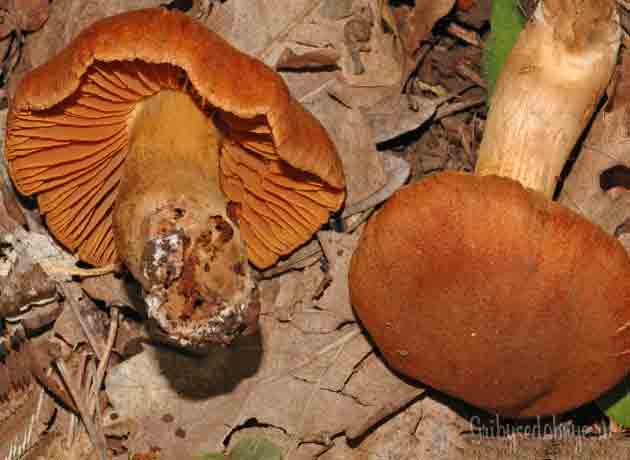

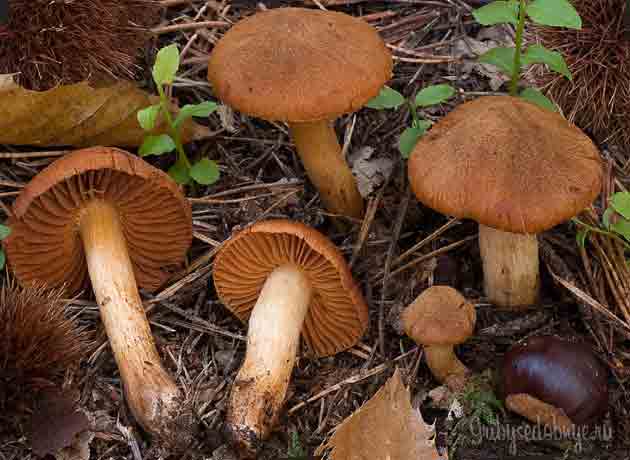

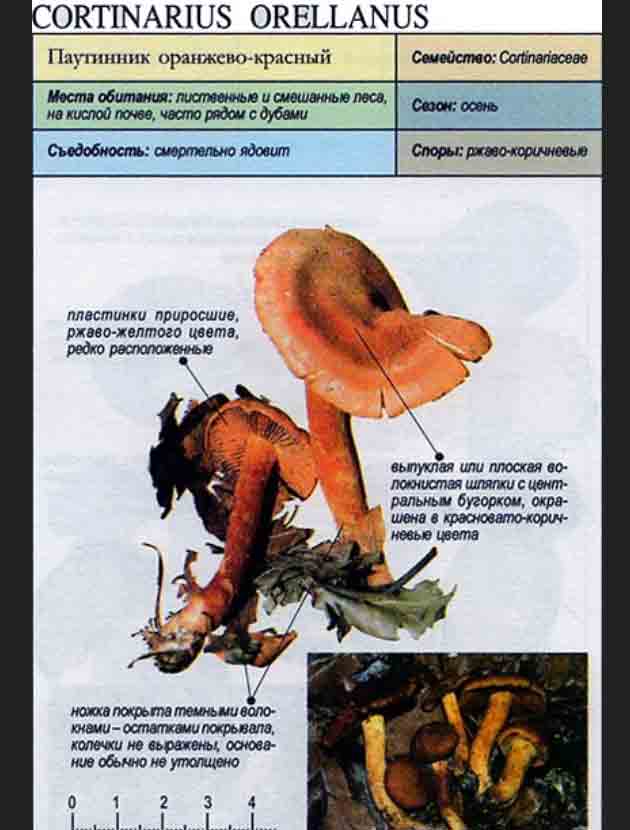
To better recognize this poisonous mushroom, it does not hurt to watch the video of the Italian Mycological Association about the Orange-red Webcap

